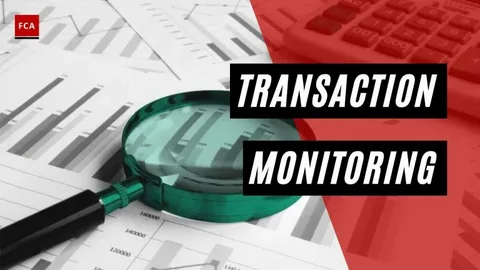New ways to commit financial crimes keep emerging in the rapidly evolving world of technology. Therefore, strict bank transaction monetary solutions have earned immense importance in curbing fiscal problems such as money laundering and financial terrorism.
Fraudsters keep searching the gaps and loopholes in banks and financial institutions for exploitation. In 2022, the eCommerce sector faced digital payment fraud of $41 billion. Such alarming statistics clearly indicate why bank transaction monitoring is necessary to save the financial sector.
What is Transaction Monitoring?
Transaction monitoring solutions help banks identify suspicious transactions. Bank transaction monitoring is a procedure to ensure the safe transfer of funds on behalf of businesses and clients. Additionally, individuals who breach the Anti-Money Laundering (AML) regulations may face significant penalties.
Weak bank transaction monitoring system is more at risk of experiencing fraudulent activities resulting in huge customer losses. Clients may lose their trust in banks and accuse them of dishonesty. Therefore, bank transaction monitoring is necessary to save financial institutions from accountability, heavy fines, and loss of credibility.
Way Forward with Bank Transaction Monitoring
Bank transaction monitoring is an integral part of AML and CFT regulations to monitor and identify risk-based and fraudulent transactions. With that said, banks must get the following customer data to ensure smooth customer transactions:
- Origin & actual destination of funds in the transaction
- The volume of money during a customer transaction
- Frequency of customer transactions
- Knowledge of sender and recipient of funds
- Analysis of high-risk factors involved in transaction procedures
Monitoring Challenges
Bank transaction monitoring is a global AML and CFT requirement that comes with a lot of challenges. Since monitoring procedures include the collection and analysis of customers’ transaction data, it comes with various challenges that are as follows:
- Structuring
Money launderers transact specific amounts of money to save themselves from regulatory thresholds. In order to conceal their suspicious criminal activities, scammers utilize structured transactional procedures through various accounts.
- Scale
Bank transaction monitoring helps businesses scale themselves. With manual transaction monitoring systems, slow and expensive procedures affect the efficiencies of banks and financial institutions.
- Speed
Money launderers take advantage of fast online banking services to transfer funds across various regions and accounts in the world by evading AML regulations to prevent illicit fiscal activities. In simple words, scammers manipulate banking systems by bypassing the security measures.
- Anonymity
Online transactions offer a certain level of anonymity that’s not possible with in-person transactions. Scammers can utilize this to hide their identities while making false or suspicious transactions.
Risk Based Transaction Monitoring
Following the standards set by FATF, risk based transaction monitoring approach assesseses individual customers and risks associated with their transactional activities. The transactions of high-risk customers require strict regulatory measures compared to low-risk clients. Here are certain steps that banks should follow to ensure security:
- Customer Due Diligence
Customer identity verification helps the banking sector and financial institutions to analyze the risk associated with their accounts and future transactions. In the CDD process, banks must collect identity information from their clients, including name, date of birth, and address.
- Screening
Once the required information is gathered from the clients and businesses, the bank transaction monitoring screens and cross-matches the data against the global sanction screening lists to streamline a smooth transaction process.
- Adverse Monitoring
To ensure accurate bank transaction monitoring, the system should keep a check on adverse news stories regarding their customers in magazines, news, and other online sources. It helps analyze the risk level associated with businesses and clients.
Bank Transaction Monitoring – What Does it Detect?
A robust and solid bank transaction monitoring solution helps the banking sector streamline the transaction process by meeting the following challenges:
- Financial Terrorism
Funding the individuals and organizations involved in terrorism is known as financial terrorism or terrorism financing. FATF has set various transaction monitoring standards for banks to detect and prevent the occurrence of such financial crimes.
- Fiscal Fraud
Banks strategize fraud transaction monitoring approaches to detect identity theft and other crimes.
- Corruption
Accurate bank transaction monitoring assists in identifying the potential signs of bribery and corruption. Detection of unusual payments and other indicators allows financial institutions to take necessary actions.
Read More: The Secrets Of Starbucks Drive Thru Success
Final Thoughts
Bank transaction monitoring is incredibly important to protect the financial sector from potential crimes like money laundering, terrorism financing, and corruption. With technology advancing so quickly, it’s crucial for banks to employ strong transaction monitoring solutions for the prevention of suspicious transaction activities. By analyzing customer data, including volumes, frequency, and origin of transactions, banks identify high-risk transactions and take regulatory actions to fight such challenges. However, transaction monitoring also faces challenges like structuring, speed, and anonymity that require innovative solutions. Ultimately, an effective bank transaction
monitoring approach is important to build the trust of banks and their customers.
